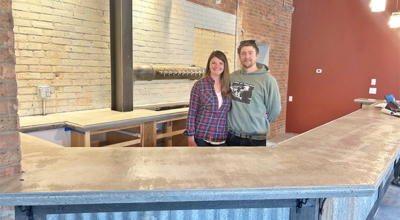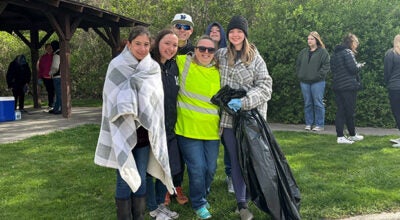Schools look to energy savings
Published 11:01 pm Monday, August 15, 2011
Performance contracting.
It’s something that’s been around since the 1970s when the federal government introduced it as a vehicle for states to fund energy efficiency projects, paying for facility needs with savings.
Dowagiac Board of Education member Mark Dobberstein found a 25-minute presentation Monday night by Ameresco engineer Diane Mills “intriguing.”
Mills told the school board in the middle school cafeteria that Ameresco, which has audited everything from the U.S. Capitol and the U.S. Navy to Niles District Library, works with clients, from schools to state and local government, to identify ways to conserve energy.
“The laws they wrote allows those organizations to use those energy savings to pay for facility improvements,” she said. “Basically, the way that it works is we come through and do audits of all facilities and infrastructure, first kind of a cursory overview looking at utility bills and comparing your buildings against other schools to see where they rank with energy efficiency. We can tell very quickly if you’re spending more money on energy than you should and if there is potential for energy savings. There’s a preliminary walk-through to look at the windows and water conservation, lighting, HVAC and how much of your equipment is automated. And the aging of the facility. Today we did a preliminary walk-through at the high school and there is quite a bit of opportunity for energy savings there. In this economic climate, how do you go to the public to fund this with so many other needs? It’s difficult.”
Mills said Ameresco will guarantee the district’s savings with its low-risk approach where with a high percentage of students who qualify for free or reduced-price lunches, the federal government will absorb most of the loan interest.
“Performance contracting is becoming very popular for K-12 schools,” she said. “The way this process works is once we do these preliminary overviews, we present to the board with an educational perspective,” including data showing the positive effect comfortable, temperature-controlled environments can have on assessment test scores.
“If the board likes the concept, then we work out a process with your team” for energy audits. “Once you decide to do it, we bring in a team of engineers to audit everything,” including equipment, and design a project.
“We actually calculate the amount of energy you would save if you decide to implement,” Mills said. “Where a performance contract is unique is we actually guarantee the energy savings, so it’s a great low-risk way for districts to make these improvements. If we don’t generate those energy savings, we would actually write a check,” but hasn’t had to so far. “Ameresco has a 100-percent client satisfaction rate. We stay out here at the schools and monitor and verify your bills. It’s an industry with standards after 30 years. Studies have shown that by improving and closely monitoring air flow, there’s less absenteeism. In terms of (better) lighting, kids test better as much as 20 percent in math and 25 percent in reading. We also audit temperature control, which is important in test scores.”






